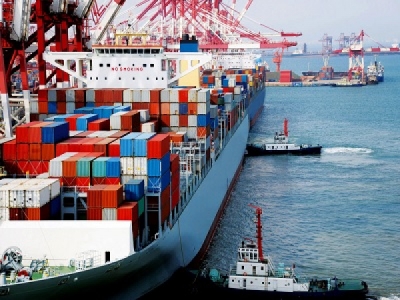
Posted on November 26, 2018
If shipping is the life blood of global trade, ports are its heart, which continue to work day in and out to handle the ever-increasing volumes of cargo and container sizes. However, the pace of development on and off-shore has varied with ports remaining anchored to conventional methods of functioning in many ways. But not anymore. Here’s how connected technologies are making ports future ready while boosting productivity and trimming costs.
Waterways are crucial for the global trade and economy. The international shipping industry carries around 90% of world trade by tonnage as per the International Chamber of Shipping. The global marine port and service market is expected to reach an estimated $87.8 billion by 2023.
One of the major projects of turning a port into a ‘smart’ port has been initiated at Rotterdam in collaboration with IBM (IBM). In January 2018, the multi-year digitization process was initiated to transform the port’s operational environment using advanced technologies such as Internet of Things (IoT), Augmented Intelligence (AI) and cloud. Axians and Cisco (CSCO) are partners in the project. While the collaboration is aimed at preparing the port to host connected ships by 2025, the initial part of the initiative involves enabling a safer and more efficient traffic management at the port.
Rotterdam will be using a centralized dashboard application which leverages IoT-enabled sensors and AI—to collect, process and analyze real-time data to check availability of berths and measure other vital statistics.
Rotterdam is Europe’s largest port and processes more than 140,000 ships each year, making berthing a complex and time-consuming process. The analysis of multiple variables, different operations (and parties) at the same time via the digital dashboard would allow better communication, decision-making and increased efficiency. It is estimated that, “shipping companies and the port stand to save up to one hour in berthing time, which amounts to about $80,000 US dollars in savings for ship operators and enables the port to dock more ships each day.”
The multiple sensors can provide vital information about air temperature, relative humidity, wind speed, salinity of water plus water flow and levels—which can enable accurate analysis about things such as visibility. Visibility is used for calculating clearance heights for ships; “Increasing the capacity of ships based on clearance heights can dramatically increase the revenue generated by each ship entering the port” according to Cisco.
Further, this information can help plan a smoother and safer arrival of ships, which would in turn lower fuel consumption. IBM’s Weather Company’s IoT and machine learning driven platform is instrumental in providing accurate predictions of the future weather. “Weather is the most significant external swing factor in business performance”, in the U.S. alone, each year, weather and climate disasters cause billions of dollars in economic impact according to National Oceanic and Atmospheric Administration (NOAA).
Other than Rotterdam, there are some interesting projects around ‘smart’ ports using advanced technologies. Back in 2015, Cisco has played a pivotal role in providing a uniform infrastructure for managing traffic, collaborating, videoconferencing and IT at the Port of Hamburg with lowering of operational costs and need of constant management.
In October 2017, DP World unveiled plans to develop Saudi Arabia’s Jeddah port, in support of the Saudi Vision 2030. The plan involves, “transforming the port to an important gateway to markets serving 500 million people which will make the Kingdom’s ports and logistics services a necessity and not a choice for global trade markets, particularly the Red Sea” said DP World Group Chairman and CEO Sultan Ahmed Bin Sulayem.
Last year, the Maritime and Port Authority of Singapore (MPA) launched the Smart Port Challenge 2017 to promote digital transformation in the maritime industry using IoT, blockchain, automation, analytics and AI. In April 2018, MPA and the Wärtsilä group partnered to promote maritime innovation and research and development across four different streams: digital acceleration, cyber-physical security, intelligent vessel and port operations.
Meanwhile, the Port of Antwerp is working on a number of projects for technological advancement of the port. In November 2017, Antwerp Port Authority and Federal Participation and Investment Company jointly acquired a stake in NxtPort, the digital data platform for the port community. NxtPort is considered a crucial partner the data-driven innovation at the port. While, a start-up is exploring blockchain technology as a solution for container collection at the Port of Antwerp.
The port of Kalmar in Sweden is working on a 2060 Vision project by combining “AI and human experience and knowledge to create a fully-automated port in time.” Meanwhile, the British Ports Association launched the port futures program to study the emerging trends on the port and shipping landscape.
In the years ahead, Smart Ports will not just be bringing in more operational efficiency and cost saving, but would be ready to welcome autonomous ships, if and when they set sail.
The views and opinions expressed herein are the views and opinions of the author and do not necessarily reflect those of Nasdaq, Inc.
Source: Nasdaq





